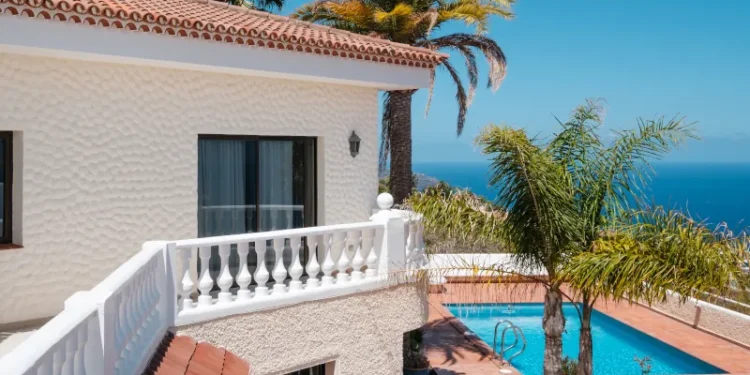Developers and real estate agents present rental returns in a variety of ways to potential property buyers.
Annual gross yields, total return over X number of years, guaranteed returns for Y number of years, and annual net rental yields are most common.
The only metric that really matters because it’s the one that you can use for an apples-to-apples comparison is net rental yields. Specifically, net rental yields before taxes, as taxes can overly complicate your initial analysis. They’re different for everyone depending on your circumstances.
Gross rental yields of 25%, 35%, or 45% can sound great until you take a look at the operating expenses.
The promoter of a project can get your attention telling you that you can earn $100,000 of gross rental income on a $400,000 property. One hundred thousand dollars is a big number, but as a percentage of $400k, it’s just 25%. You need to ask how many years it will take to earn that income and what expenses you will incur over those years.
The more years and expenses, the lower your net rental yield—that is, the cash in your pocket—will be.
On the flip side, management fees of 35%, 45%, and even 50% sound insanely high… until you consider the expenses covered in those fees and look at the net rental yields the numbers provide.
A rental management company that offers their services for 15% but charges you separately for everything they do from maid service and laundry to basic maintenance and greeting renters, could serve you up a worse net rental yield than a full-service management company that charges you 35%.
You also need to look at how full the management company can keep your property. A company can charge more but gets you high occupancy and could easily generate a higher net yield for you. The devil is in the details.
The devil is also in the timing.
Another mistake many investors make when analyzing rental properties, along with not drilling down to net rental yields, is not considering the ramp-up time required for a new rental.
Most rental projections offered by developers selling pre-construction properties are proforma or stabilized rental yields. It takes time for a new property to be marketed and start receiving guests. It also takes time to work up to the expected occupancy rate. In other words, you’re not likely to achieve the projected rental yields in the first 12 months after a property is completed.
If nothing else, you must furnish a short-term rental which even in the most organized processes of taking possession of a newly completed property is going to take some weeks.
One developer friend recently commented to me that he’s getting grief from buyers in a building he completed this year.
The cash flow hasn’t really started yet… because the property was just completed.
Owners have keys, so they expect monthly income matching the projections they saw when they bought off-plan, and they expect it from the first day the property has its occupancy permit.
Of course, that’s unreasonable. But it’s not an uncommon position from investors.
The only rental properties that you can expect immediate cash flow from are ones that are already built, have been sold to you furnished and ready to rent, and have a rental management company already in place.
Even then, if the property is in a seasonal market, you have to wait for the season. That’s how my apartment in Portugal played out…
We closed on the apartment in November, well into the off season. Maybe a renter was in it over Christmas, but the cash flow didn’t really start until April, which is the beginning of the shoulder season.
Still, that first full year of ownership, the apartment paid out a net rental yield well within expectations because everything was in place, including the marketing from the rental management company.
If you buy a condo hotel unit, you need to understand that most of the time, the hotel operator needs at least a year through high season to get the marketing up to full speed to hit the average occupancy rates for hotels in the area. Some hotels look for 18 months or more to get up to their stabilization point depending on the market.
That’s the downside to buying a rental investment as pre-construction. You’re not going to get a rental yield during construction and you’re probably not going to see the projected net rental yield during the first year of operation.
A recent developer deal that came across my desk was for a pre-construction building where the investors were buying shares of the project. The developer was clear in their projections and how the returns would play out. It would take 24 to 30 months to build the apartment building and 18 to 24 months to get renters into the apartments and maximize rental income for the building.
This was for a long-term rental project rather than short-term rentals. The building has a lot of units, which will take time to fill even in a market with a large need for more rental properties.
The profit for the investors isn’t in this case in the cash flow during the stabilization period, but from the capital gains projected when the developer sold the building after stabilization.
That’s probably a better way to look at an individual pre-construction property purchase as well. You want it to show good rental potential, but you should expect some upside on value of the property as well over the construction period.
The bottom line when buying a property for rental is unless it’s already a proven rental property, it’s going to take time to build up to the expected net rental yields.
It’s net rental yields you want to be talking about. If a real estate agent or developer only wants to talk to you about gross rental yields… or worse, just raw rental dollars you can achieve on the top line… move on to another agent.
What net rental yields should you look for? Much depends on both the location and the maturity of the market. A mature market in Europe might earn you a net rental yield of as little as 3.5% to 5%. Paris is one such market… unless you find a good deal.
Younger short-term rental markets like Medellín back in 2011 might throw off net rental yields in the range of 15% or more. This is typically due to low capital costs coupled with a limited supply in a market with rapidly growing demand.
In these markets expect property prices to go up along with rental supply as investors move in to take advantage of the high yields.
In time, sooner or later, rental yields will revert to 5% to 8%. That is the range most markets fall into… again, unless you’re getting a great deal on the price.
Stay diversified,

Lief Simon
Editor, Offshore Living Letter












